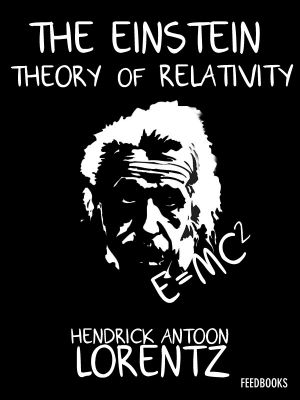The Einstein Theory of Relativity

- Authors
- Lorentz, Hendrik Antoon
- Publisher
- GLOBAL INDIA PUBLICATION
- Tags
- science and technics , non-fiction , science
- Date
- 2016-12-17T00:00:00+00:00
- Size
- 0.18 MB
- Lang
- en
The action of the Royal Society at its meeting in
London on November 6, in recognizing Dr. Al-
bert Einstein's “theory of relativity” has caused
a great stir in scientific circles on both sides of
the Atlantic. Dr. Einstein propounded his theory
nearly fifteen years ago. The present revival of
interest in it is due to the remarkable confirm-
ation which it received in the report of the ob-
servations made during the sun's eclipse of last
May to determine whether rays of light passing
close to the sun are deflected from their course.
The actual deflection of the rays that was
discovered by the astronomers was precisely
what had been predicted theoretically by Ein-
stein many years since. This striking confirma-
tion has led certain German scientists to assert
that no scientific discovery of such importance
has been made since Newton's theory of grav-
itation was promulgated. This suggestion,
however, was put aside by Dr. Einstein himself
when he was interviewed by a correspond-
ent of the New York Times at his home in
Berlin. To this correspondent he expressed
the difference between his conception and
the law of gravitation in the following
terms:
“Please imagine the earth removed, and
in its place suspended a box as big as a
room or a whole house, and inside a man
naturally floating in the center, there being
no force whatever pulling him. Imagine,
further, this box being, by a rope or other
contrivance, suddenly jerked to one side,
which is scientifically termed ‘difform mo-
tion’, as opposed to ‘uniform motion.’ The
person would then naturally reach bottom
on the opposite side. The result would con-
sequently be the same as if he obeyed
Newton's law of gravitation, while, in fact,
there is no gravitation exerted whatever,
which proves that difform motion will in
every case produce the same effects as
gravitation.
“I have applied this new idea to every
kind of difform motion and have thus de-
veloped mathematical formulas which I
am convinced give more precise results
than those based on Newton's theory. New-
ton's formulas, however, are such close ap-
proximations that it was difficult to find
by observation any obvious disagreement
with experience.”
Dr. Einstein, it must be remembered, is
a physicist and not an astronomer. He de-
veloped his theory as a mathematical for-
mula. The confirmation of it came from the
astronomers. As he himself says, the cru-
cial test was supplied by the last total solar
eclipse. Observations then proved that the
rays of fixed stars, having to pass close to
the sun to reach the earth, were deflected
the exact amount demanded by Einstein's
formulas. The deflection was also in the
direction predicted by him.
The question must have occurred to
many, what has all this to do with relativ-
ity? When this query was propounded by
the Times correspondent to Dr. Einstein he
replied as follows:
“The term relativity refers to time and
space. According to Galileo and Newton,
time and space were absolute entities, and
the moving systems of the universe were
dependent on this absolute time and space.